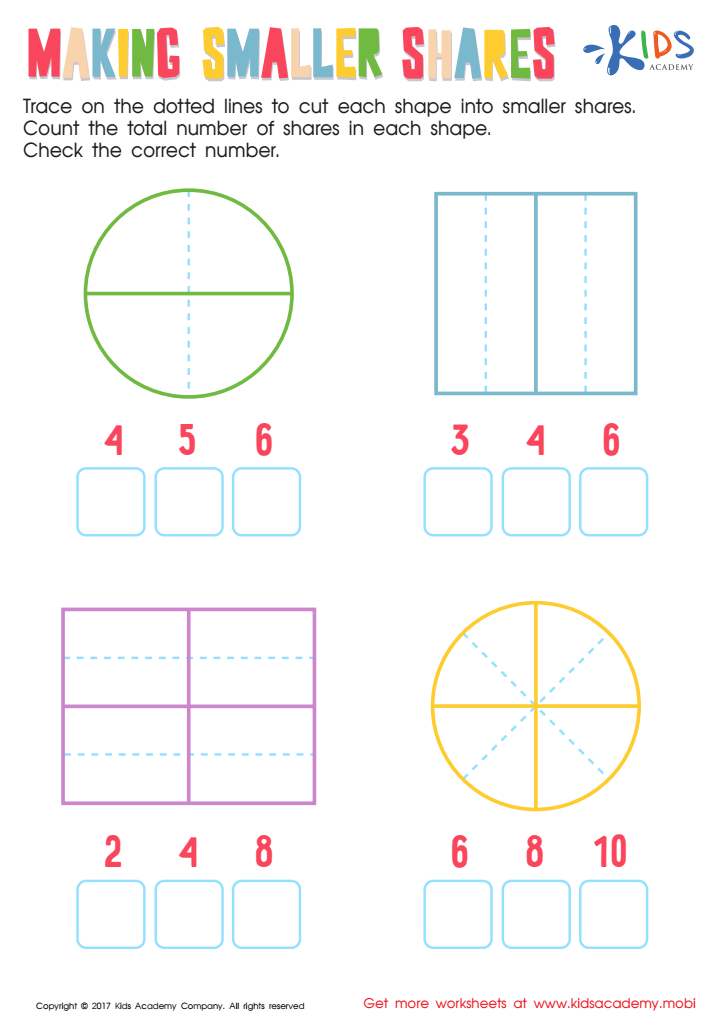Comparing Fractions Geometry Worksheets for Ages 3-6
3 filtered results
-
From - To
Explore our engaging "Comparing Fractions Geometry Worksheets" designed for children aged 3-6! These worksheets aim to introduce young learners to the concept of fractions through fun and interactive activities. With colorful visuals and age-appropriate challenges, kids will develop their understanding of comparing different fractions while enhancing their geometry skills. Each worksheet encourages critical thinking and problem-solving in a playful manner, making learning enjoyable. Perfect for homeschooling, tutoring, or classroom use, our resources provide a solid foundation in math and geometry for early childhood education. Download your worksheets today and watch your little ones gain confidence in their mathematical abilities!


Fractions: Shapes Worksheet


Comparing Shares Worksheet


Making Smaller Shares Worksheet
Understanding comparing fractions and geometry in early childhood education is crucial for children aged 3-6 as it lays the foundation for essential mathematical skills and critical thinking. At this age, children are naturally curious and eager to explore the world around them. Introducing concepts of fractions, such as greater than, less than, and equal to, encourages them to recognize relationships and similarities in sizes and portions. This foundational knowledge fosters an intuitive understanding of division and sharing, key concepts they will encounter in later grades.
Geometry, on the other hand, helps children develop spatial awareness and logical reasoning. Through activities involving shapes, sizes, and spatial relationships, children learn to classify and compare objects, improving their problem-solving skills. When teachers or parents engage toddlers in comparing fractions and geometry, they are igniting a love for STEM (Science, Technology, Engineering, and Mathematics) learning.
Furthermore, practical applications—like sharing snacks or measuring elements in building blocks—can make learning engaging and relevant. By nurturing these skills early on, parents and teachers not only enhance academic development but also pave the way for future success in mathematics and critical thinking. This holistic approach to learning shapes well-rounded individuals prepared for more complex concepts.
 Assign to My Students
Assign to My Students





























